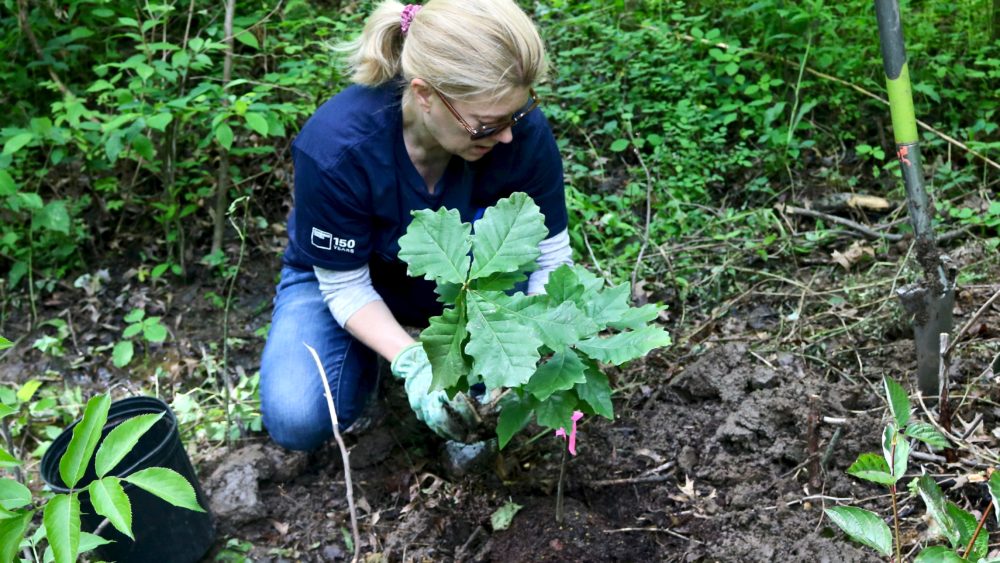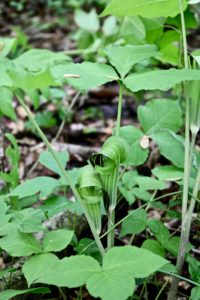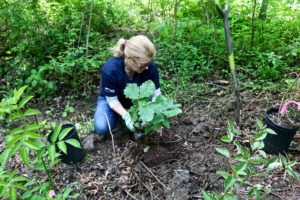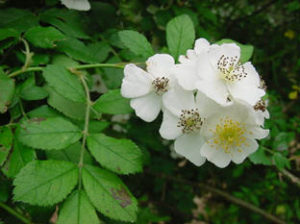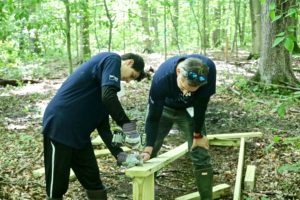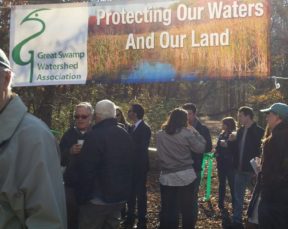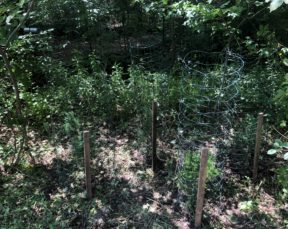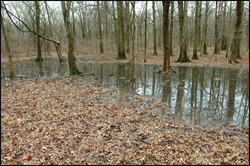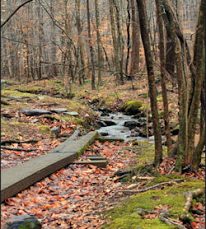by Brianna Diggs, GSWA intern and Chatham High School senior
Taking It In
After a tough but successful work day at the Conservation Management Area Friday, I was more than excited for the next set of activities. Last week, the Corporate Team Works (CTW) volunteers focused on land stewardship by removing invasive species such as; multiflora rose, Japanese honeysuckle, and garlic mustard. The plants occupy the forests and open spaces, harming the environment and upsetting the natural balance of biodiversity for native wildlife to thrive. A second group fixed old boardwalks and built new ones along the Blue and Orange trails for future hiking groups and tours. The boardwalks make the trails more manageable for educational programs and management activities, especially for days when the paths are extremely muddy from downpours. Finally, the third group wheeled and spread mulch along the trails for extra path management.
Since last week was my first week interning, and I started off slow by taking photos of the workers around the Conservation Management Area (CMA). I was able to ease my way into the process and explore the trails as I took photos of native plant and animal species around the refuge. On the Silverbrook Trail, I encountered toads sitting on mossy logs, a chipmunk scurrying across the new mulch paths, and some Jack in the pulpits sprouting around the other native flora. Later on I helped lay down mulch trails and transport wheelbarrows back and forth, but I grew tired more quickly than I anticipated.
Setting Goals
For the next work day, I decided to set a new goal for myself. With the other high school interns starting this week and helping with the stewardship work around the Silverbrook Trail, I learned to pace myself and work longer throughout the day. I started off by taking photos of the volunteers and walking around to each sight. Starting with boardwalks, I helped GSWA steward, Steve Gruber, and his team carry their measured pieces of wood to their building site. With the help of the other interns, they got the supplies they needed and progressed more in the long run. Next, I stopped at the invasive site on the Blue Trail. After the substantial progress they made pulling invasives last week, the next step was planting native species to encourage natural biodiversity. Madison High School made a trip to the refuge as well, and they pulled out any leftover invasive plants for future native planting. My last stop was along the Orange Trail, where Sandra led another boardwalk crew in repairing the old boardwalks and building new ones.
Re-establishing Balance
After my short photography trip around the refuge, I started working on pulling invasive species with the other interns, Hannah and Ethan. Although Ethan and I knew little to nothing about different plant species, Hannah showed us how to distinguish them by leaf shape and their stems. Multiflora rose has serrated edges and thorns on its stems, making it easy to find it but harder to
remove without getting pricked. Although people used it to control deer browse on native plants, it grows abundantly and takes over natural ecosystems. Over the course of the day, we pulled huge bushes out from the stream banks and surrounding the trails. The piles and piles of the bushes we pulled showed first-hand how rapidly multiflora rose grows and its negative impact on the surrounding wildlife. We also found large amounts of privet, another invasive with oval-shaped leaves and spindly stems.
Eventually, we lost track of time, only wishing to remove as many invasives as possible! Even when all the other volunteers left, we stayed out on the trails with GSWA steward John Kramer and continued to pull out the rose bushes until we were content with our work. Next week, hopefully we can continue to pull out the rest of them to ensure that the new native species will flourish and improve biodiversity in the refuge.
Even after only two Land Stewardship days, I learned about different wildlife species and their impact on the ecosystem, whether as a natural buffer for the streams or to improve the wildlife variety in the refuge. I also never knew about different invasive species and how they harmed the surrounding environment, but by hearing from my peers and pulling them out myself, I realized their large quantity and how they stifle the growth of native plants. Finally, work days helped me understand the effort that goes into wildlife conservation and the Environmental Science field, especially seeing the love and dedication the staff and volunteers put into their work. Seeing others so enthusiastic about helping the environment only encourages me to take as many opportunities as possible to contribute and see the positive changes that we can make by working together.
Find out more:
Conservation management area, CMA Trail Maps, Stewardship, Volunteer with GSWA
